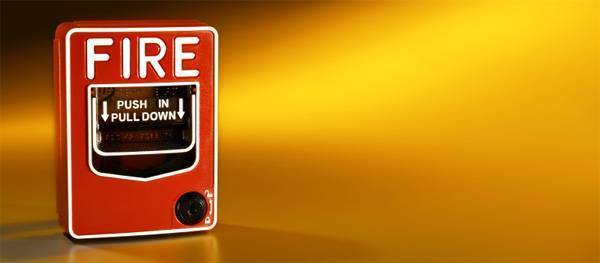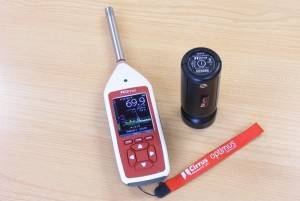Testing fire alarm sounders to BS EN 5839
 If you’re measuring the noise level from fire alarm sounders in accordance with BS EN 5839, the sound level meter that you use must meet a specified standard, BS EN 61672-1:2003, and must display the level in dB(A) using Slow Time Weighting.
If you’re measuring the noise level from fire alarm sounders in accordance with BS EN 5839, the sound level meter that you use must meet a specified standard, BS EN 61672-1:2003, and must display the level in dB(A) using Slow Time Weighting.
The instrument should meet at least Class 2 of BS EN 61672-1:2003 although a Class 1 instrument would also be suitable as this is more accurate than a Class 2 instrument.
A summary of this is as follows:
- Standardisation: BS EN 61672-1:2003 Class 2 (A Class 1 instrument is also acceptable)
- Frequency weighting: dB(A)
- Time Weighting: Slow
 We would recommend a CR:152A Class 2 optimus yellow sound level meter from the optimus range as this will give you all of these requirements in a simple to use package.
We would recommend a CR:152A Class 2 optimus yellow sound level meter from the optimus range as this will give you all of these requirements in a simple to use package.
One advantage of the optimus sound level meters is that the display can be easily read in low light conditions and the keypad will light up to make sure that you can see the keys.
If you are testing a large number of sounders or if you need to store the measured noise levels for reference and record keeping, it may worth using a sound level meter that has data logging such as the CR:152B optimus.
This will allow the individual noise levels from each sounder to be stored and the information downloaded to the NoiseTools software. If you have a large number of tests to do then this may be a quicker and more convenient solution than writing down each measurement as you make it.
As with any noise measurement equipment, we would recommend that you use an Acoustic Calibrator before and after each measurement. This ensures that your instrument is measuring noise levels correctly and that it is operating as expected.
If you would like more information about the optimus sound level meters click here to contact us
Related posts:
What’s the difference between a Class 1 and Class 2 Sound Level Meter?
Jaymee-lee Tolliday
Latest posts by Jaymee-lee Tolliday (see all)
- Turning Down the Volume: How the Trojan Noise Nuisance Recorder can help create a quieter world - 13th February 2024
- Festive Opening Hours 2023 - 6th December 2023
- Award of Excellence for Cloud-Based Monitoring Solutions 2023! - 20th November 2023

